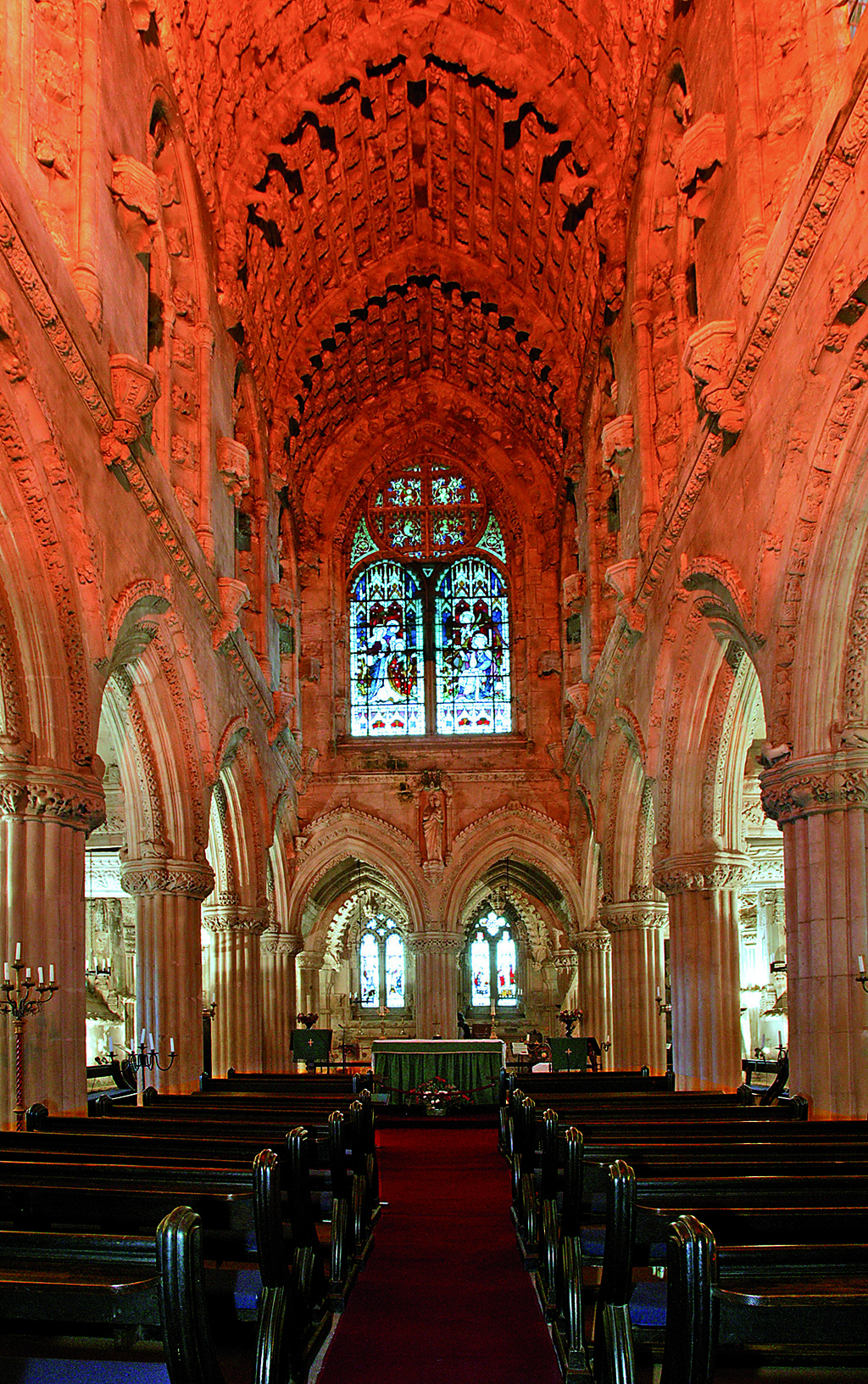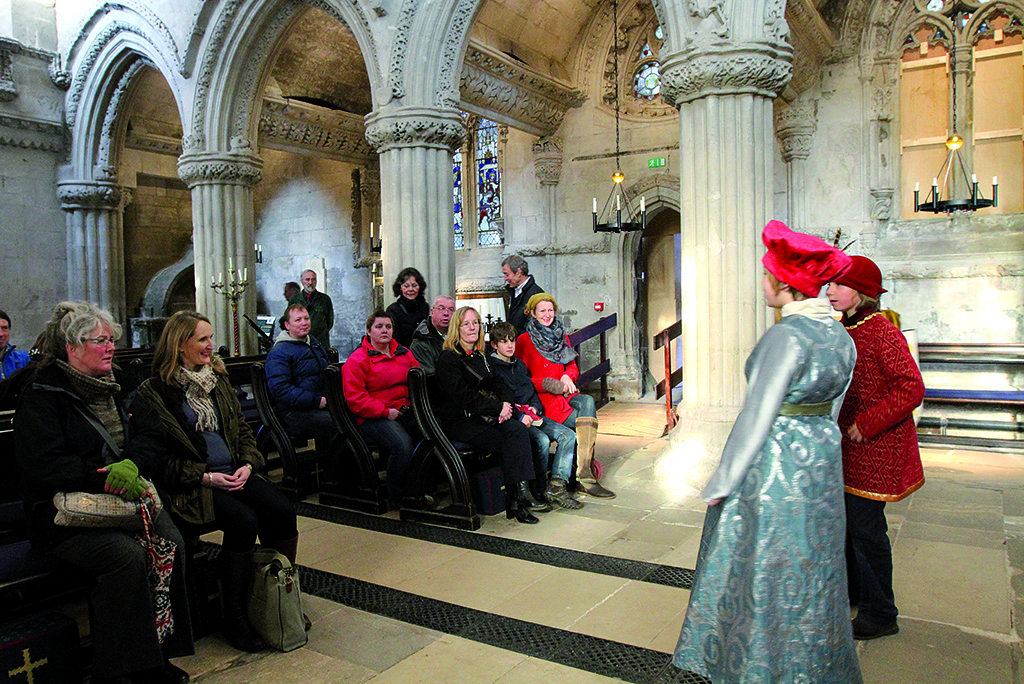
More to Rosslyn Chapel than The Da Vinci Code
For a brief moment in 2003, Rosslyn Chapel was one of the most famous places on Earth.
A global audience was devouring Dan Brown’s The Da Vinci Code, an intricately plotted novel that had the chapel at its heart.
But despite the completion of a £9 million restoration project in 2012, the iconic building is proving that it doesn’t need best-sellers and blockbusters to maintain its status as one of Scotland’s finest visitor attractions.
The chapel, on the outskirts of Edinburgh, has seen it all before, of course; visitors, including Boswell, Burns, Scott and Wordsworth, have flocked here since at least the 1600s.
Rosslyn’s status as a tourist attraction was firmly established on the publication in 1805 of another literary sensation, Sir Walter Scott’s Lay of the Last Minstrel, in which the chapel features prominently (‘Seem’d all on fire that chapel proud / Where Roslin’s chiefs uncoffin’d lie’). The royal seal of approval was given in 1842, when Queen Victoria popped in, after which she commented: ‘So unique a gem should be preserved for the country.’
The chapel was designed and founded in 1446 by Sir William St Clair, who also built the village of Roslin to house the army of stonemasons needed to complete the project. It took them 40 years to do so, using 10,000 blocks of stone quarried from Roslin Glen. St Clair died before its completion and was buried beneath the floor of the unfinished chapel.

Tom Hanks and Audrey Tautou in The Da Vinci Code
From its setting in the magnificent Roslin Glen above the River Esk, next to the ruins of Roslin Castle (painted by Turner in 1818) to its famously gothic exterior, it’s not diffi cult to see why Rosslyn has inspired writers and artists for centuries. But it is the extraordinary intricate carvings that cover the chapel’s pillars and walls that really set it apart.
Among these carvings are the Dance of Death – 16 fi gures each accompanied by a skeleton, to symbolise the inexorable march of death; more than 100 green men – which could be pagan or Christian symbols; and, of course, the iconic and exquisite Apprentice Pillar. There is also a bevy of faces and fi gures, including Christ, Lucifer, a knight on horseback and an angel clutching the heart of Robert the Bruce.
Many of the carvings are religious allegories, important at a time when most worshippers were illiterate, depicting the story of Moses, the crucifixion, the seven virtues and the seven deadly sins. But the meaning of certain carvings has been lost over time, and some intriguing theories have been put forward to explain these, including several that hint at a link between Rosslyn and the Knights Templar and the Holy Grail.
The Holy Blood and the Holy Grail, a book published in 1982, contained one of the most influential theories, claiming that the Holy Grail was the proof of Christ’s marriage to Mary Magdalene and their subsequent children, buried beneath Rosslyn Chapel in 1307. This was the theme taken up by Dan Brown in 2003.

Prior to The Da Vinci Code, around 40,000 visitors came to Rosslyn each year. By 2006, after the film of the book, this had rocketed to 175,000. This was great for the chapel’s profile, less so for the fabric of the building, but it did allow the Rosslyn Chapel Trust to raise the money required for its preservation work.
This restoration project had been conceived well before Brown’s book, the Trust having been set up in 1995 ‘to maintain the chapel as a place of Christian worship, not as a tourist attraction’, as the Trust’s director, Colin Glynne-Percy, puts it. This was, after all, why the chapel was built in the first place, although it had only been in use for about 100 years before its altars and statues were smashed as symbols of papist idolatry during the Reformation.
The chapel was left abandoned for 300 years – apart from a short period in the 1650s when it stabled the horses of Cromwell’s army. In 1736, some work was started to restore the chapel, and in 1862 it was rededicated by the Bishop of Edinburgh. It has been a place of worship ever since.
The present conservation project began in 2009: stonework has been cleaned and repaired, stained-glass windows (including the superb East Window) have been painstakingly removed, cleaned and replaced and the organ has been restored.

The Trust also acknowledged the chapel’s importance as a tourist venue, attracting everyone from ‘faith tourists’ to committed grail-hunters. As such, almost £4 million of the budget was spent on the new education centre, which opened in November 2011.
Along with a shop and café, the centre has interactive screens showing how the chapel was built and allowing visitors to listen to the stories, myths and legends surrounding the site. State-of-the-art 3-D computer models give an unprecedented view of many of the carvings, most of which are difficult to see with the naked eye.
In fact, education is crucial to the Trust, which is why Rosslyn has a full-time education manager and a full programme for lifelong learning for children, teenagers and adults. Once a month, pupils from the local primary school become costumed tour guides for children from other schools.
Interestingly, the Holy Grail, the Knights Templar and The Da Vinci Code are all notable by their absence. The Trust’s decision to underplay the Grail connection might have something to do with the criticism it received in 2006 for being seen to perpetuate some of the myths. The criticism was fair: there is not one shred of evidence linking the Knights or the Grail to Rosslyn. Moreover, as Colin Glynne-Percy reminds us, ‘the Knights Templar disbanded a good 150 years before the chapel was built’.
None of this really matters because Rosslyn’s setting and architecture let it stand alone as a tourist attraction. Tom Hanks, after filming The Da Vinci Code, put it nicely: ‘Few destinations live up to their billing, but Rosslyn Chapel was all that one could imagine and hope for.’
The link between Rosslyn and the Knights Templar may be disputed, but the recent work on the chapel has uncovered a number of bona fide mysteries.

For example, one of the stone buttresses on the roof was found to contain a hidden beehive (honey was a prized asset in medieval Scotland so needed to be kept well hidden). A large slab on the roof was found with intricately carved hearts on its underside. What did they mean? Were they a mason’s mark or an apprentice’s practice attempts or something more significant?
The most tantalising discovery was made by workers installing the new central heating system. On lifting a couple of slabs in the floor, they were shocked to find two skeletons. One had been disturbed by previous works but the other was intact, untouched since the day it was interred.
When exactly that was is a mystery that should be solved through carbon dating and other tests, but other questions remain: How did they die? Why were they buried in such an unconventional spot? And who were they? Perhaps one of them is Sir William St Clair himself.
The future of Rosslyn Chapel has been secured, for both the local congregation to worship and for visitors to marvel at its architecture and history. But Rosslyn is also a place of myth, legend and fantasy; a building steeped in secrets and mysteries. Some of these have been discovered, but how many more remain hidden in its walls or below its slabs?
This feature was originally published in 2012.
TAGS

